
Essay 2: Constructing Regular Polygons
by Shawn D. Broderick
Regular polygons are closed plane figures consiting of edges of equal length and vertices of equal size. The simplest regular polygon is the equilateral triangle, which consists of three edges of equal length and three angles between each pair of edges to be 60 degrees. Three edges is the smallest number of edges to construct a polygon because two edges forms an angle and one edge is a segment. Polygons are closed figures. The regular polygon of four edges is the square. Five edges make up the pentagon, and six, the hexagon.
We will investigate how to construct regular polygons using compass and straightedge versus a dynamic geometry program like Geometer's Sketchpad.
We first look at the construction of an equilateral triangle with straightedge and compass. It is the simplest regular polygon in the plane. It consists of three sides.
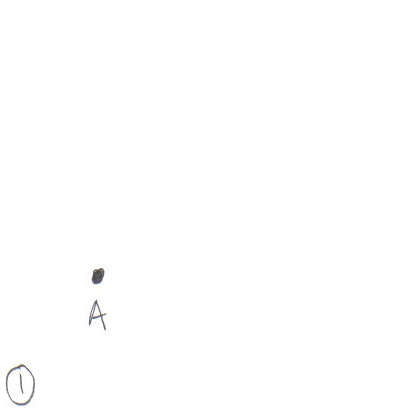
1. We begin by drawing an arbitrary point A.
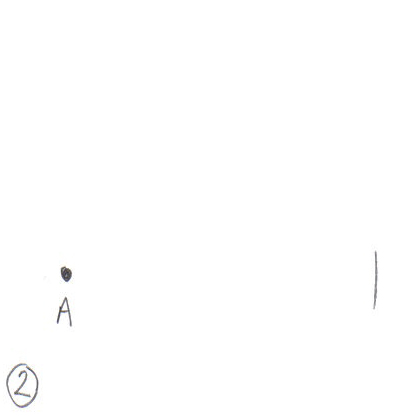
2. We then open our compass to a fixed distance and make a small mark to the right of our point A. This is where our point B will eventually be.
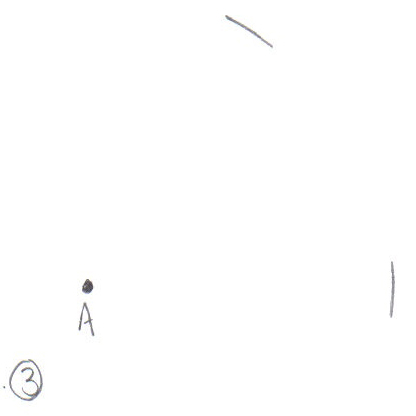
3. Without lifting the compass point from the paper, we move the pencil end up and toward the middle and make another mark. This will be where point C will eventually go.
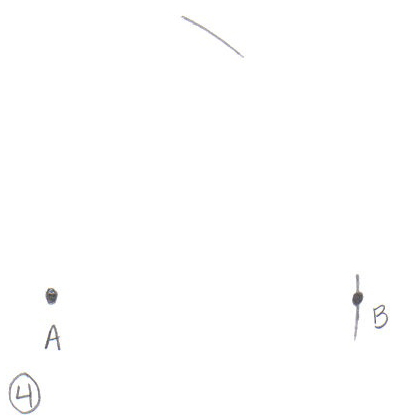
4. We now label our point B anywhere on the mark. (Why can we mark it anywhere on the line and still maintain a certain length?)
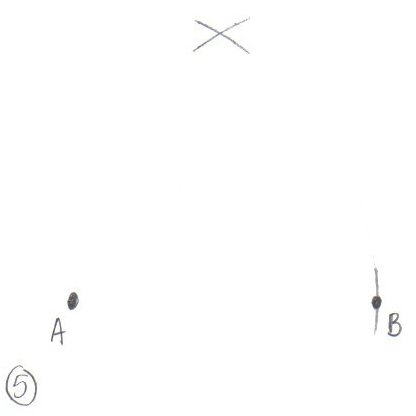
5. Now place the point of the compass on point B and make a mark up and to the middle crossing the place where point C will go.

6. Mark the intersection as point C.

7. Using the straightedge, draw the first side of the triangle from A to B.
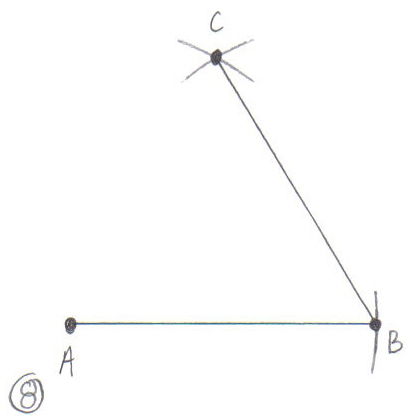
8. Again, using the straightedge, draw the second side of the triangle from B to C.

9. Draw the final side. We are now finished with the construction of the equilateral triangle.
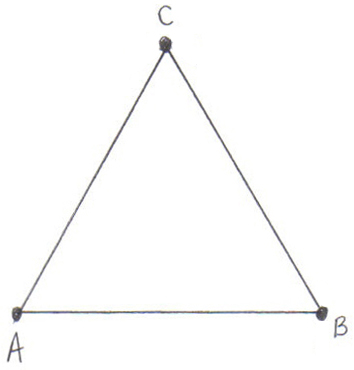
Equilateral Triangle
We will now compare this process to the process one might use to construct an equilateral triangle in GSP:

1. We begin by drawing an arbitrarily long segment. This will be one of the sides of our triangle.

2. We will label the points A for the left point and B for the right point.
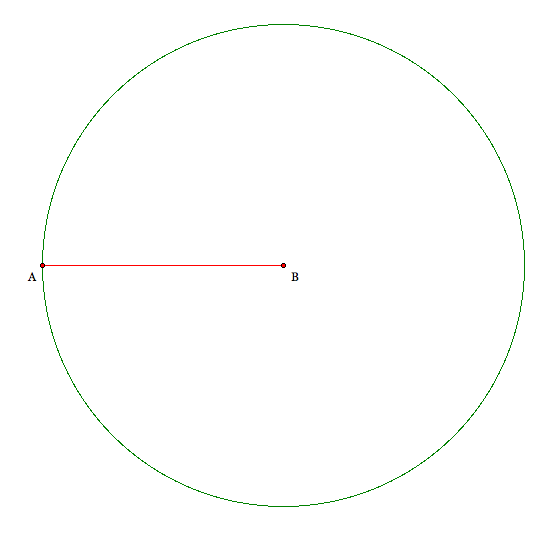
3. We now construct a circle using point B as the center and point A as the edge.
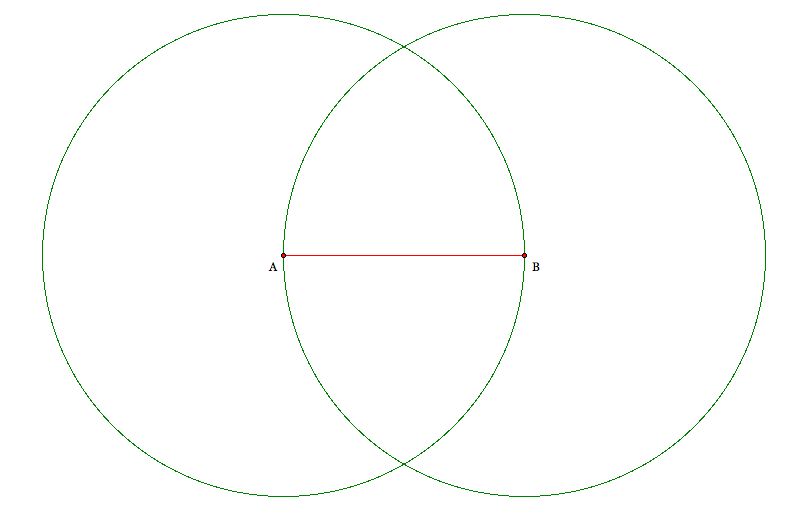
4. Next, we make another circle using point A as the center and point B as the edge.
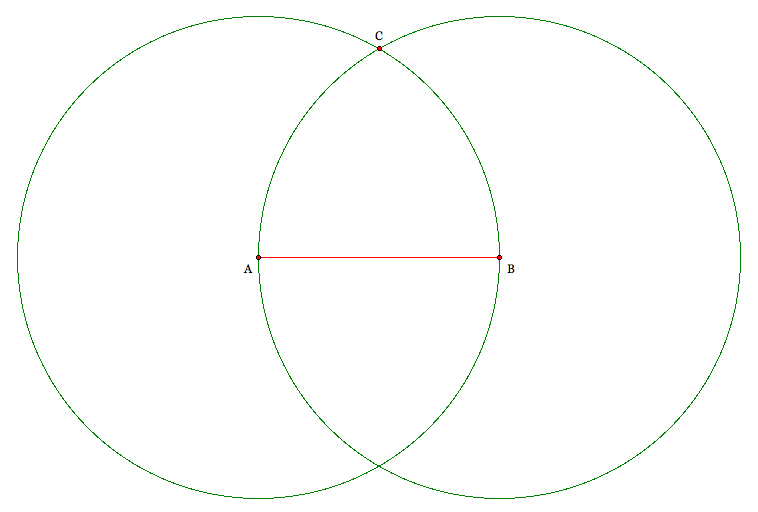
5. We construct their intersection and label it point C.

6. We construct segment AC.

7. We construct segment BC.
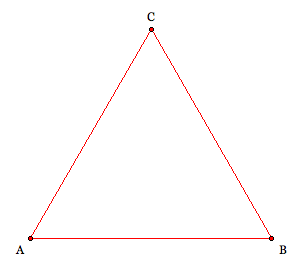
8. If we hide our circles, we now have our equilateral triangle.
Questions:
1. Why do these constructions work?
2. What makes this an equilateral triangle in either media?
3. Do we lose or gain anything if we teach students how to do these using one media, the other, or both?
Answers:
1 (and part of 2). In class we discussed that these equilateral triangles worked because the two circles that are constructed, or marks from two circles, we will see that the segments of the triangle are radii of the circles. If the circles are the same size, then the radii the same size and their position is such that they meet at three points (centers of circles and their intersection). Here is a diagram that might help:

We started with one circle and constructed two radii. Then we reflected the circle across the line to have two circles.
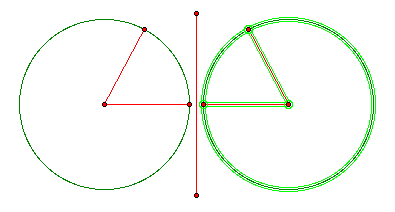
We will select one circle and merge it with the other to show how the radii form an equilateral triangle.
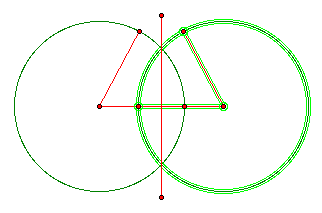
As we get closer we can see that the radii will form the triangle.
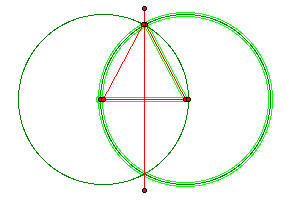
As the circles have merged and now share a radii, which forms the base, we can see that because all the radii are equal, if they overlap to form the base and the other two connect at the top, we must have an equilateral triangle.
Rest of 2. We have seen what makes an equilateral triangle in GSP, but with respect to the pencil-and-paper construction, we see that they are the same, but instead of using circles to show the congruence of the radii, the compass (whose openness remains constant) is used to create radii that are congruent.
3. We might lose a little with the pencil-and-paper construction because the circles are fully illustrated in GSP and with pencil-and-paper we only see arcs of circles and the uniform distance created by the compass is hidden. However, I feel that both types of constructions are beneficial in order to have a more completely formed idea of constructions for the students.
Let's take a look at how to construct a square. Again we start with the construction by compass and straightedge:
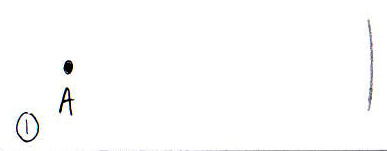
1. We mark a point A, set our compass to a certain length, and make a mark. We need to keep this length, so don't lose it.

2. We label a point on the mark of the compass, B.

3. We then draw a straight line through point A and point B.

4. Using the compass at the current setting make a mark to the left of point A and to the right of point B.

5. If we want to make a square, we need to construct perpendicular lines extending up from points A and B. So, in order to do this, we need to extend the compass from our arbitrary length just a little. We then place the point on the very left intersection and make an arc as illustrated above. Then we place the point of the compass on point B and make another arc around point A so they intersect as illustrated. Repeat this process to make similar arcs around point B. Start with the point of the compass on point A and make an make the arc around B. Then place the point of the compass on the right most intersection and make an arc connecting with the other, enclosing point B.

6. First, make two marks above points A and B using the original arbitrary length of compass. These will signify the height of square. It will be exactly the same length as it is from A to B, therefore it will be a square. Next we need to find out the position of where the vertex of the square would be. This is why we made arcs. Using the straightedge, draw a line from A up through the two arcs around A and intersect it with the mark from above. The illustration shows how this could now look.
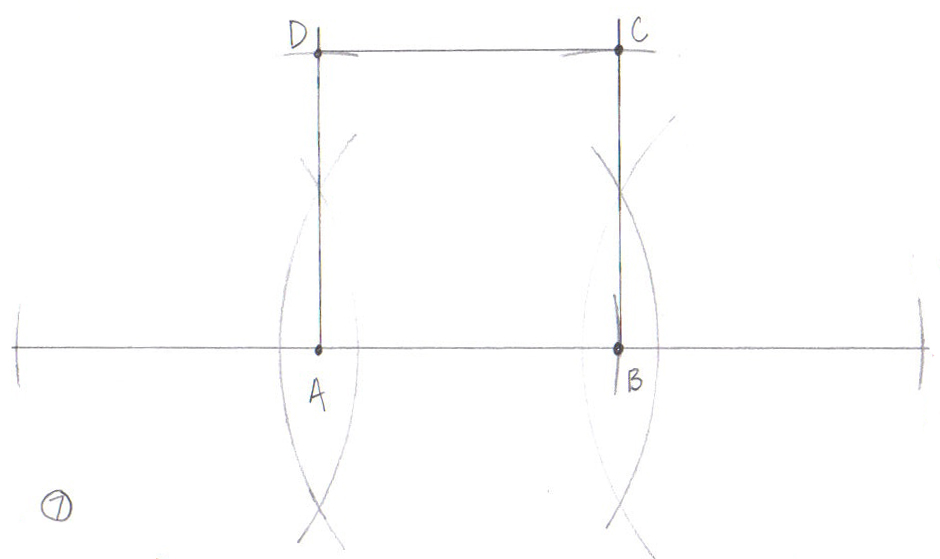
7. We now finish the construction by drawing the perpendicular line up from B to the mark and label that intersection point C. Finally, we connect point D and point C to finish the square.

Square
We now illustrate how one may construct a square using GSP:
![]()
1. Construct a segment of arbitrary length.

2. Construct a circle using A as the center and B as the edge. At the top of the circle we now have marked a distance the is the same distance as it is from A to B.
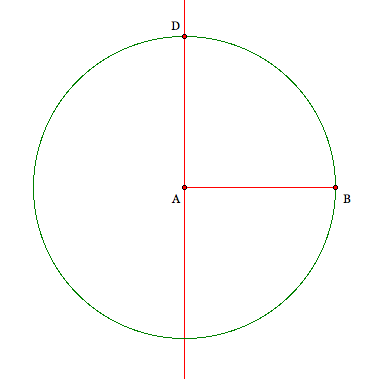
3. So, we now construct a perpendicular line through A to the segment AB. The intersection of this line through the top of the circle we label as point D.
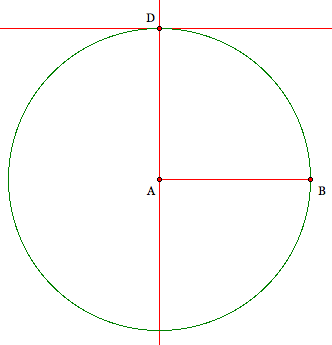
4. We now construct a perpendicular line through point D to the line AD.

5. Next we construct another perpendicular line, this time through point B to the line AB.
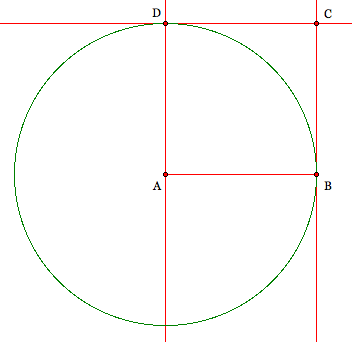
6. We label this point, C.

7. If we hide the objects that have helped us with our construction, we have a constructed square ABCD.
Comment:
It seems that the reason this works is similar to the explanation for the equilateral triangle. Here are some sketches:

Here we have the same type of construction as with the triangle. Now our radii are perpendicular, and the same length. This is similar to the attributes of a square.
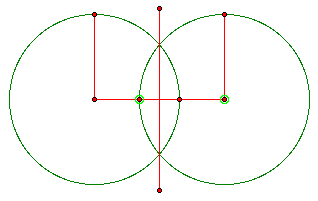
We now select two points on one circle and merge it with the other.
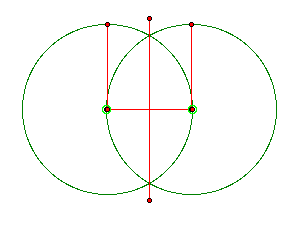
Once they are merged, we can see the square. We just connect the top points and we will have our square.
We now turn our attention to the construction of a pentagon using compass and straightedge. I had no idea how to do this at first, so I needed to use the Internet. There are many different ways to construct a pentagon. The focus for this essay is to show a way to do it and discuss why the approach works. What is the mathematics behind it?

1. The pentagon is constructed from a circle. Each of the vertices will intersect with the edge of the circle. So, we first construct the circle with the compass. Next, we draw a line down the center of the circle, dividing it in half.

2. We need to construct another line dividing the left half of the circle in half. In the figure, we have done this by bisecting the 180 degree angle that goes down the middle of the circle. To do this, we set the compass to a certain opening point. We place the point of the compass on the center of the circle and make a mark on both of the rays that arbitrary distance out. We then place the point of the compass on the marks we made and make another mark in the area where the bisection of the angle will go. The creates an X whose intersection is where the ray of the circle needs to go. Draw the angle bisector with the straightedge.

3. The next objective is to construct the midpoint of the segment we just drew. In order to do this, we open the compass to an arbitrary distance that is just longer than the approximate midpoint of the segment. We place the point of the compass on the center of the circle and make a mark of an arc as pictured. Then we keep the compass measurement as is and place the compass point on the intersection of the segment and the edge of the circle and make a similar mark. If the compass is open far enough, then the arcs should intersect as shown. If these new intersections are connected, the intersection of the both segments is the midpoint of the segment.
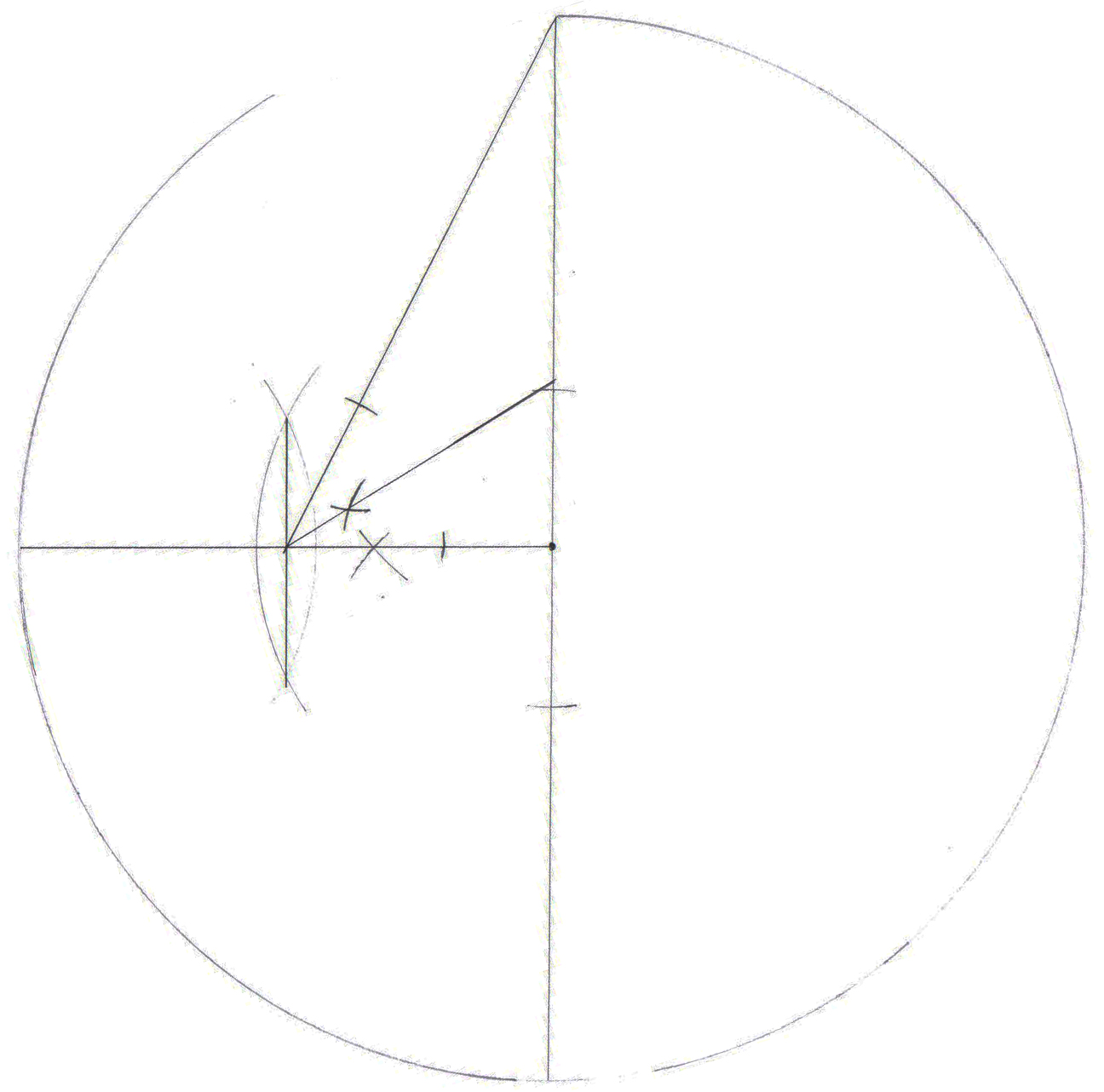
4. Next, connect the midpoint of the segment we found toward the top of the circle and to the intersection of the dividing line and the edge of the circle. Our next goal is to bisect the angle formed by the segment from the center to the edge and the midpoint to the edge as shown in the picture. We use the same methods as in the beginning. We open the compass to an arbitrary length, which is less than the length of the angle segments. Placing the point of the compass at the vertex of the angle, we make to marks on the angle segments. Then we close the compass some and place the point of the compass on the marks we made and make new marks towards the center of the angle. These marks should intersect at the angle bisector. Drawn the line of the angle bisector from the vertex of the angle through the X and to the line that partitions the circle in two equal parts. (Actually, as shown in the next figure, you need to extend the angle bisector past the vertical line.)

5. The next objective is to construct a parallel line to the horizontal segment at the point of intersection of the vertical segment and the angle bisector. This is done by placing the point of the compass at the vertex of the bisected angle and marking off the angle with an arc as shown. Where the angle bisector intersects the vertical segment, place the point of the compass and make another arc as before. Then we open the compass just enough to go from angle segment to angle segment at the mark you made. Then make another mark down from the arc you make above and this intersection is the point where the parallel line can be drawn through the intersection of the angle bisector and the vertical line. Go ahead and do so.

6. Connect the intersection of the new segment and the edge of the circle to the top intersection of the vertical line and the edge of the circle and we have constructed the first side of our pentagon.

7. We now need to repeat this whole process in order to construct three more sides. We can connect the fourth side to the fifth without making a construction. However, we make one anyway in order to check that the figure was constructed correctly. Now we just need to decide on a place to start. Since we constructed the side starting at the top and slanting down left, we make our segment that goes through the center of the circle starting at the last point we just constructed.
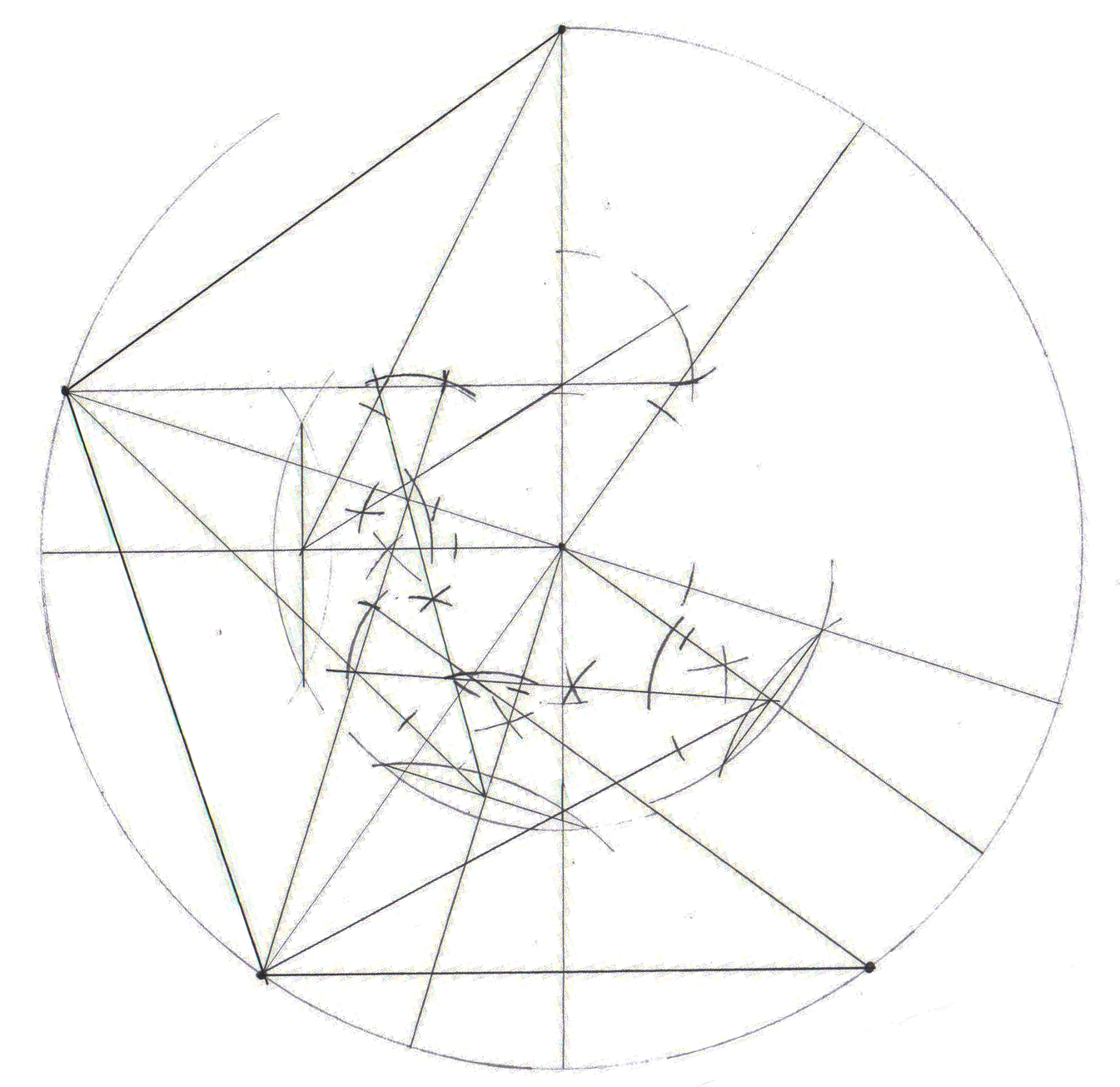
8. We repeat this process another time.
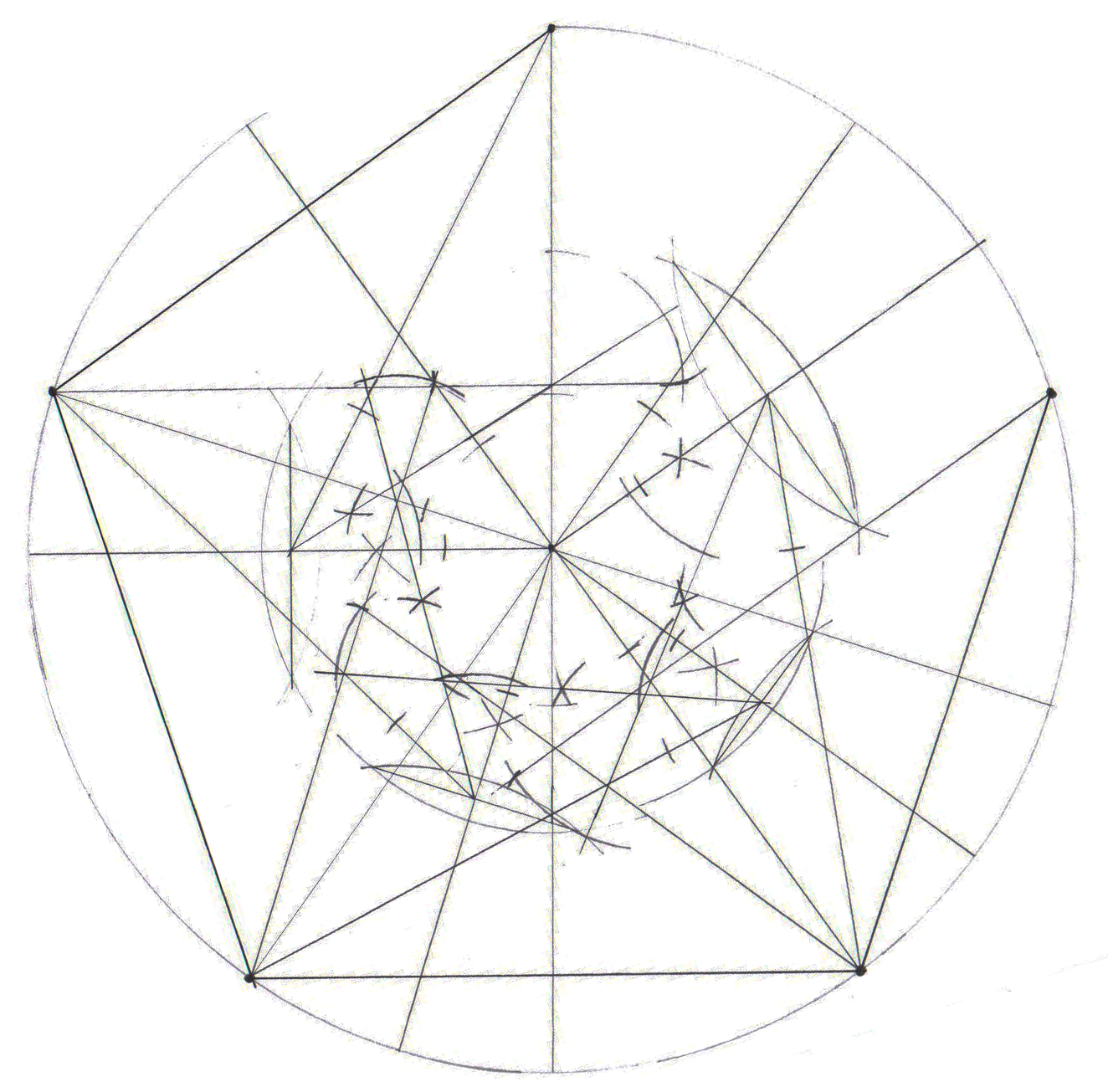
9. We repeat this process again.
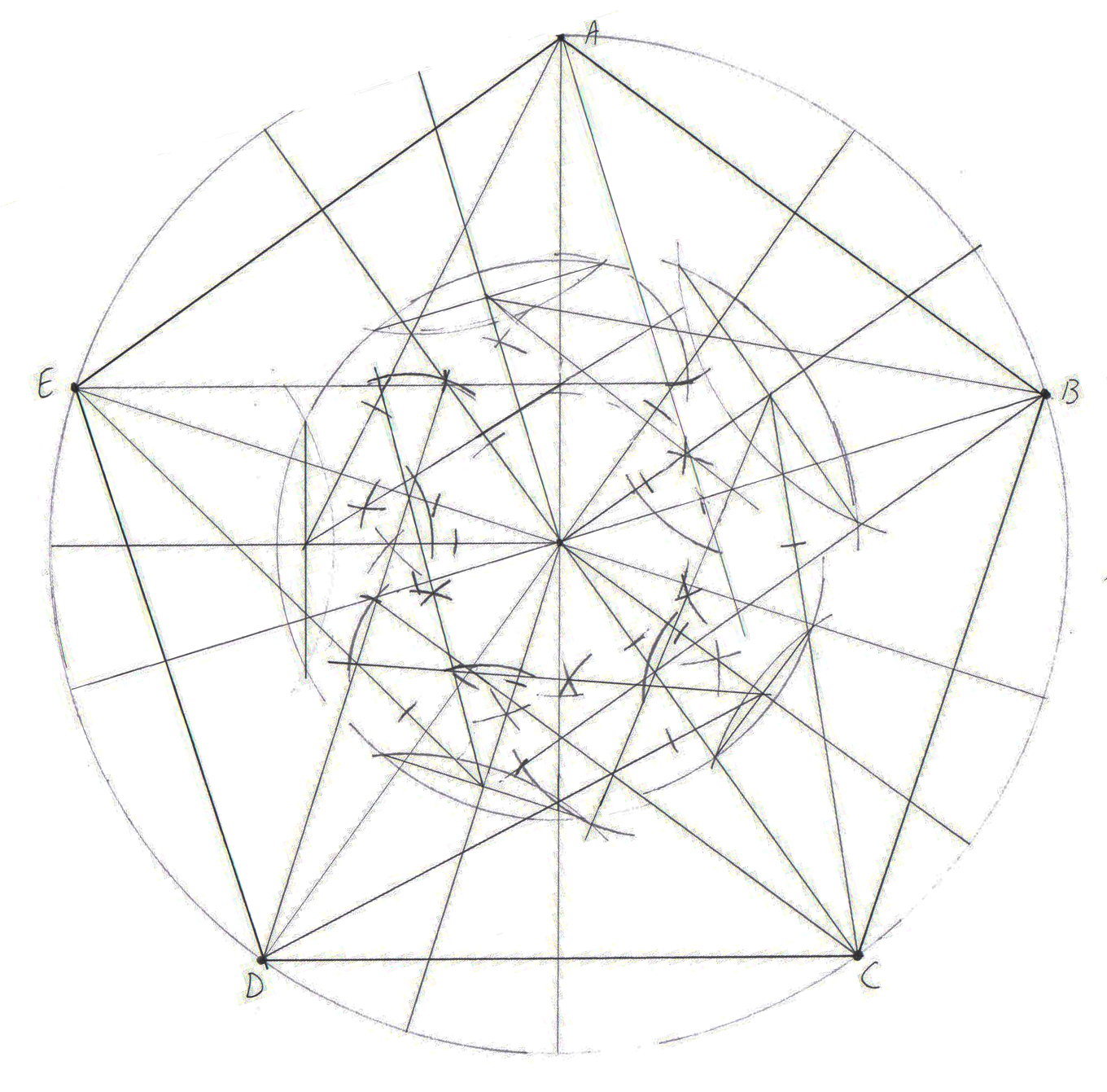
10. We now finish by constructing the final side, even though it is not necessary. We now have our pentagon ABCDE.

What is also curious to me, is that there are mathematical byproducts of constructing a pentagon that one can observe. The is a large circle on the outside of the construction, before we hide it. Then there is also a little circle inside the pentagon, if the arcs locating the midpoint of the segment were a little more consistent. There is also a little pentagon inside the big one, too. However, is it regular? Is is proportional to the big pentagon? If the construction was drawn perfectly, would the little pentagon be regular? Does this mean that the big pentagon is not exactly regular?
We now show this same process using GSP:

1. We construct a circle of arbitrary length. Then we construct a line down the center of the circle.
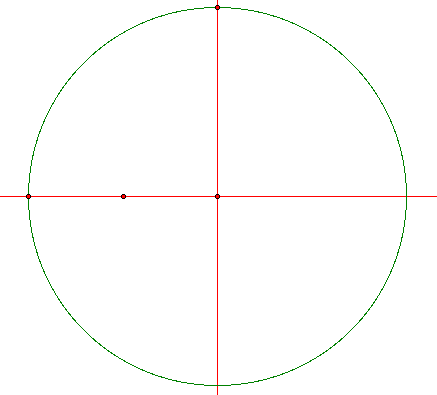
2. Next, we construct a perpendicular line to the vertical line through the center of the circle. We make a segment with the line we just created from the center to the left edge. Then we construct the midpoint of that segment.
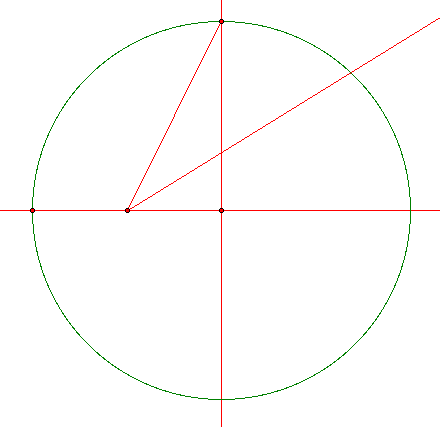
3. From there we draw a line connecting the midpoint to the top of the circle. This creates and angle and next we construct the angle bisector.
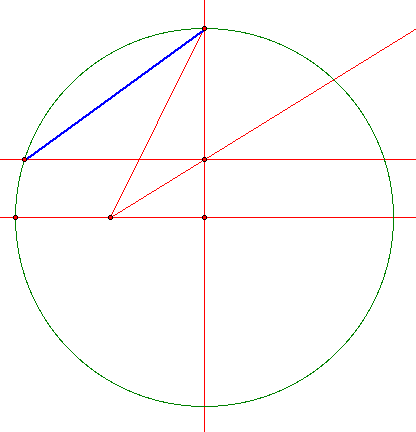
4. We construct a parallel line to the previous horizontal line, and the intersection of the new line with the edge of the circle is the point for the creation of the first side of our pentagon. We now draw this side. This process will be repeated with different colors beginning with the side point we just constructed.

5. We now repeat this process for the second side with maroon.
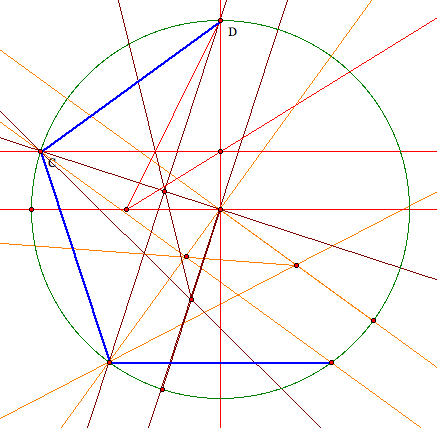
6. We repeat this process again with orange.
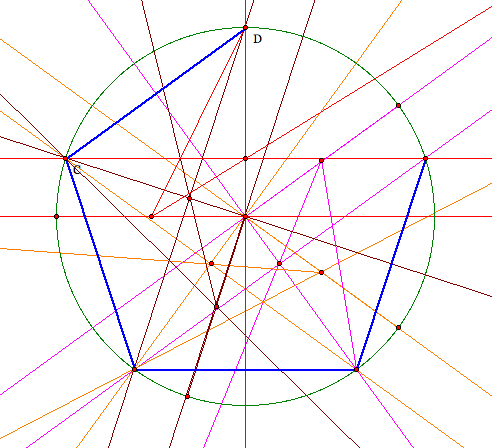
7. We repeat this process with pink or fuscia, whatever that color is. At this point we can simply connect the last two sides, but since I was interested in the geometry within, I repeated the process one more time to see if the preciseness of GSP would help.
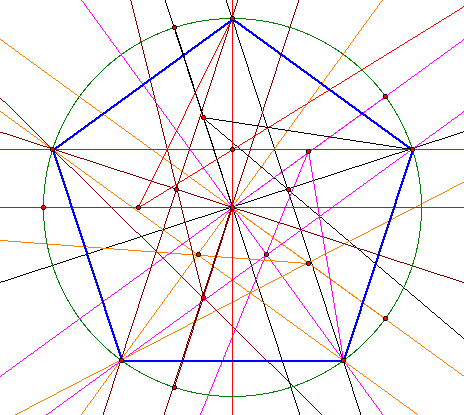
8. It seems that there are many things happening in the middle of this construction. However, the pentagon that I thought would be directly inside is not as perfectly situated as I thought.

9. If we hide all the thin lines, we can see our pentagon.
Question:
Why does this work?
Answer:
In class we discussed the use of the golden ratio. In the pentagon,

the ratio of the length of the red diagonal to the length of the side is equal to a special number.
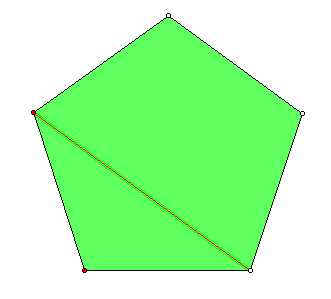
We will use this demonstration to show how the construction above is a pentagon. We now make a circle of radius one side length unit:
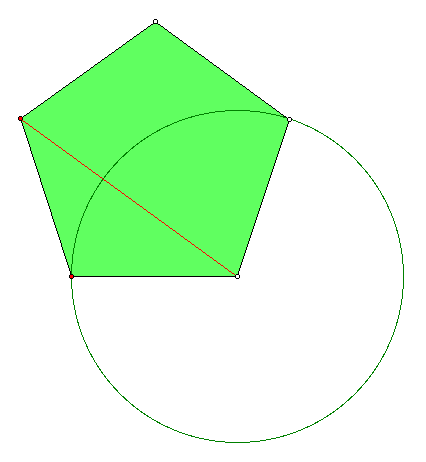
We then put some labels on to facilitate discussion:

First, we observe that triangle ABF is similar to triangle AEB. Because of this, we can conclude that:

Then, we have the following through substitution:

Which yields:

We know that phi is the golden ratio. Thus, we have the proposition that the ratio of the length of the diagonal of the regular pentagon to the length of its side is the golden ratio. We now look at our construction:
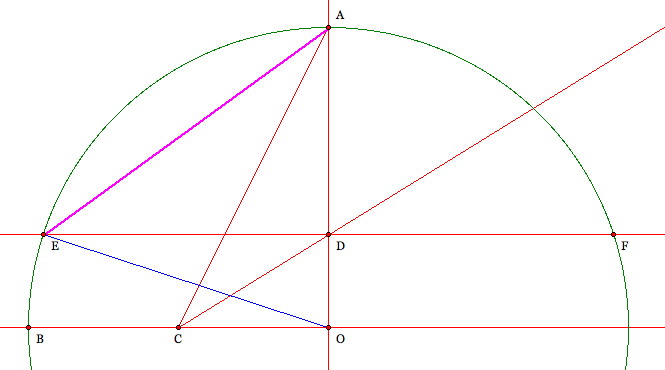
In order to discuss the reason this construction is a pentagon, we use the above labels. Our goal is to prove that the ratio of the diagonal of the pentagon (EF) to the side (AE) is phi, or the golden ratio, then the figure is proved to be a pentagon. The construction depicted above is the same construction we used, except I constructed the segment EO to facilitate the calculation of EF.
I begin by noting that we are given that segment AO, BO, and EO are 2 units in length. Segment BC and CO are one unit in length because C is the midpoint of BO. If AO is 2 and CO is one, then AC is:
![]()
We now can find the angle ACO by using trigonometry. Therefore, angle ACO is:

Thus, angle DCO is half of that, by definition, which is:
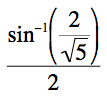
Segment DO/1 is equal to:

Because we know that EO is 2, we use the Pythagorean Theorem to find ED. Thus, ED2 + DO2 = EO2. So, we have:

Therefore, ED =
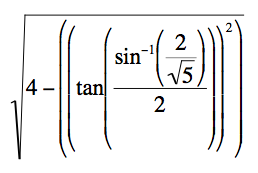
We multiply this expression by 2 to get the length of EF. So, EF =

We are now halfway to our goal. Remember that we are going for the ratio of the length of the side of our figure to the length of the diagonal. We have the diagonal EF. We now seek the length of a side, say AE. Our plan is to use the Pythagorean Theorem to find AE. We will use the equation AE2 = ED2 + AD2. We know ED and we can find AD with the expression of 2 – DO. Therefore, we solve:

When we find AE and use our calculator to get a decimal approximation we have AE = 2.35114100917. The decimal approximation for EF = 3.80422606518. Then EF/AE = 1.61803398875. The decimal approximation for the golden ratio is exactly what my approximation for EF/AE. Therefore, this construction gives a regular polygon.
We now move into the section on constructing a hexagon with straightedge and compass:
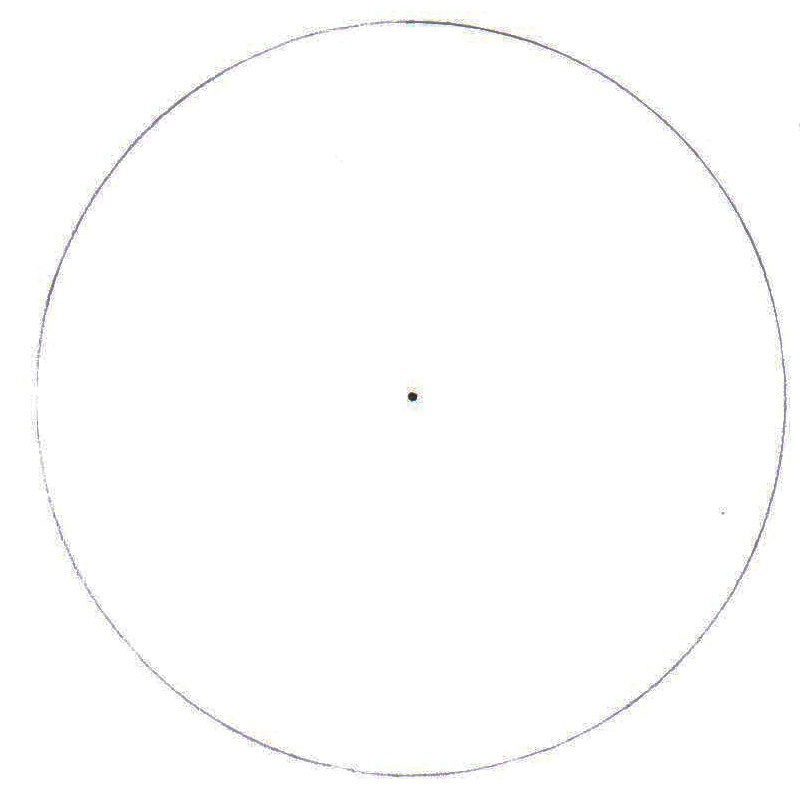
1. We begin by constructing a circle of arbitrary size.
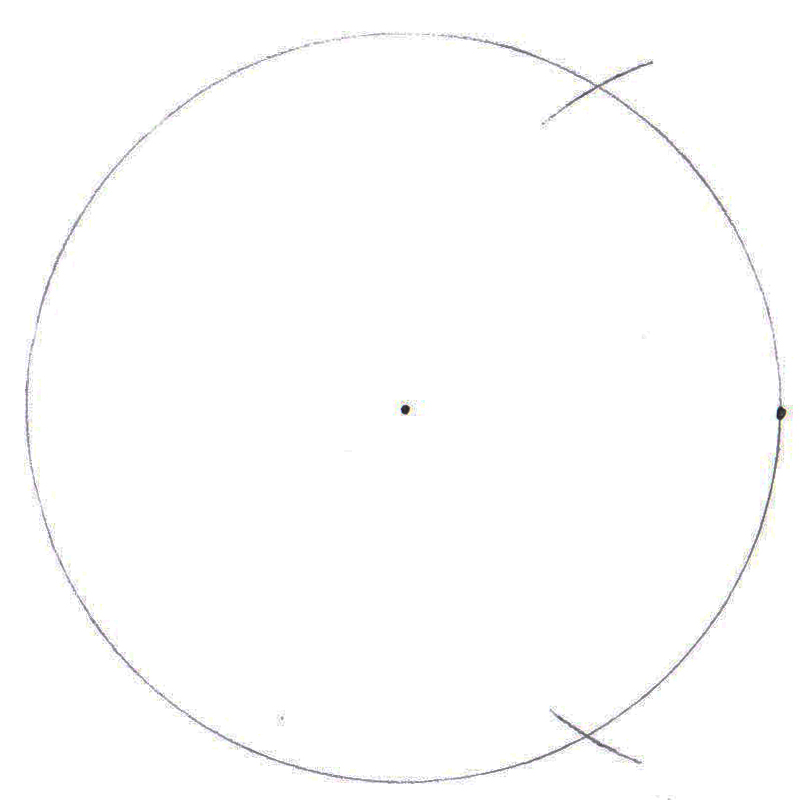
2. We make a mark on the edge of the circle at the right side. While maintaining the original arbitrary size of the compass, we place the point of the compass on that mark and mark the intersections of the circle on the top and bottom.
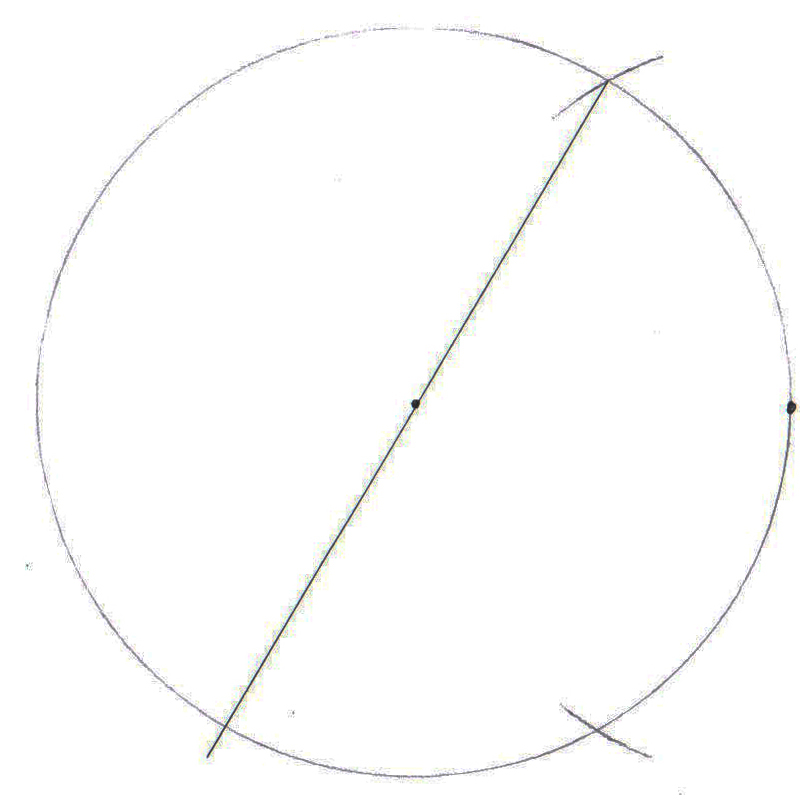
3. We now draw a diameter of the circle from the top intersection of the circles through the center and continuing through the opposite edge at the bottom with our straightedge.
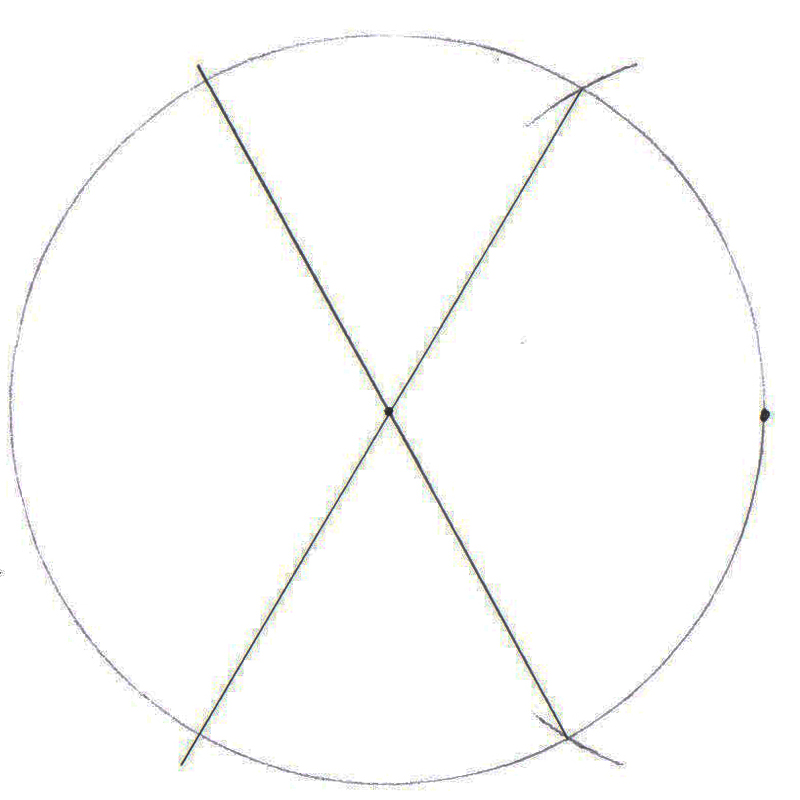
4. We do the same for the opposite intersection.
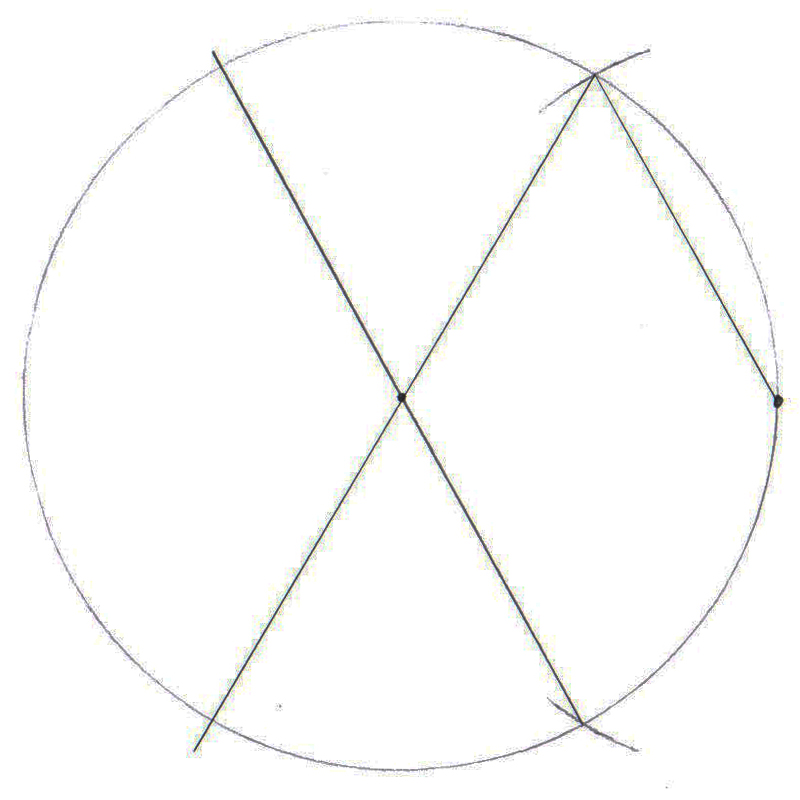
5. We can now begin to construct the sides of the hexagon. Our first side is from the right point we marked to the top intersection of the circle.
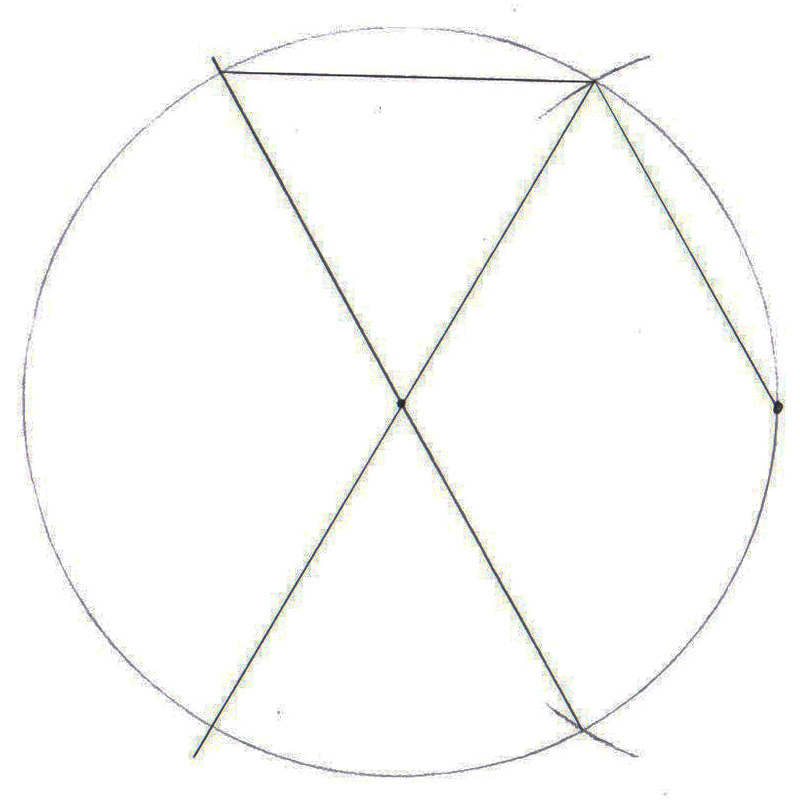
6. Our second side connects the top intersections. But wait, where is our third side going to go?

7. We make our third side by constructing the line that connects the marks of the centers of our two circles. If we extend that line through the other side, we have the intersection on the left which marks the point where our third side will terminate. We can now construct this third side.
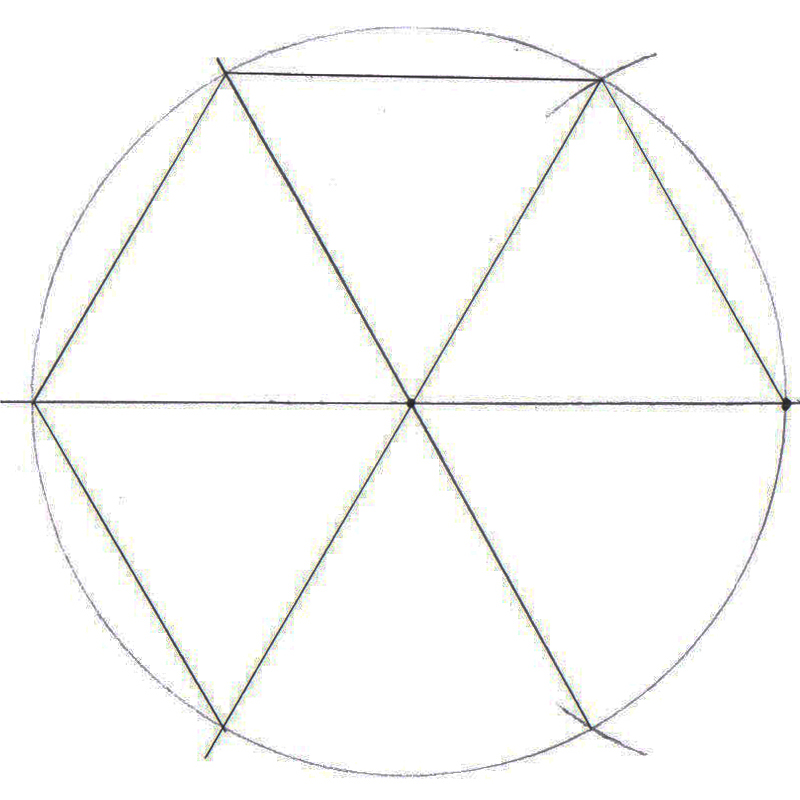
8. We draw the fourth side by starting at the intersection we just made and end at the bottom left intersection.
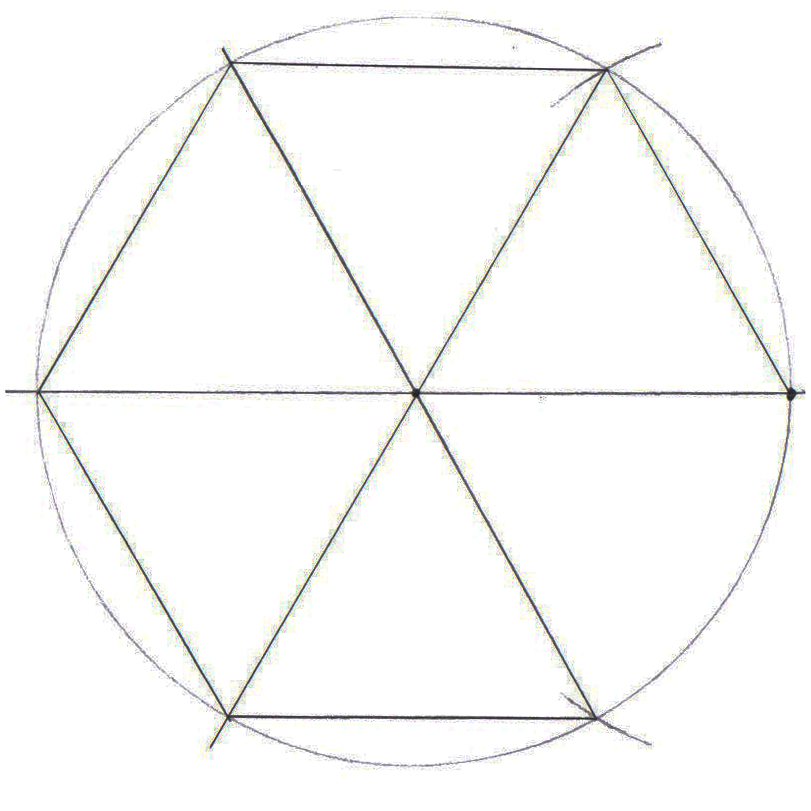
9. Our fifth side is constructed by connecting the bottom intersections.
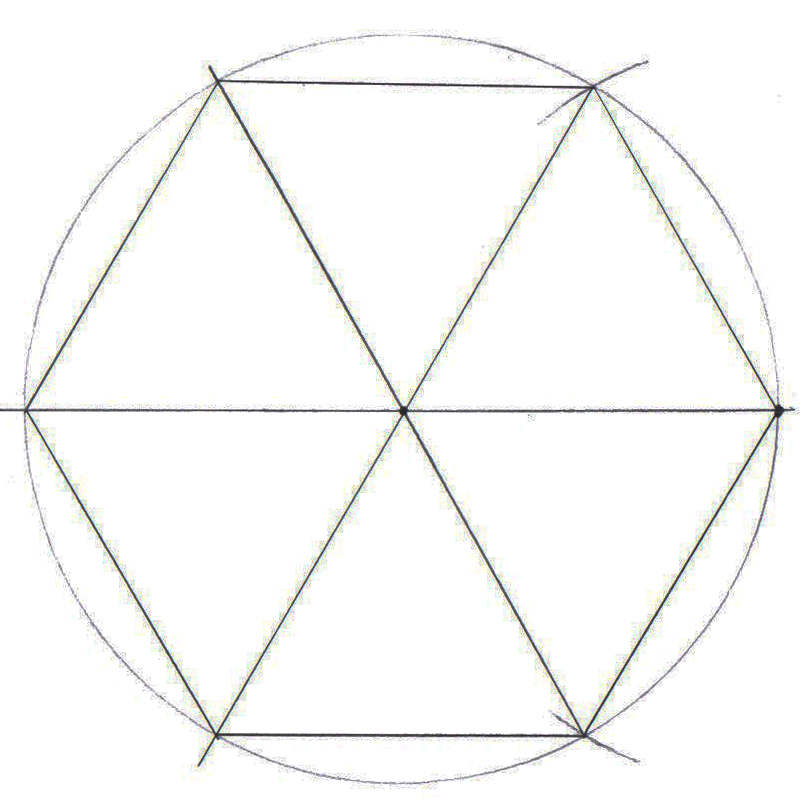
10. We finished constructing the sides of the hexagon by connecting the intersections from the bottom right to the right-most mark.

11. We have our hexagon!
Hmm...It looks like the top is a little crooked...I'm not sure why it ended up like that. Again we ask how does this construction produce a hexagon. Does it have to do with being able to construct the interior or complementary angles?
We perform this process in GSP:
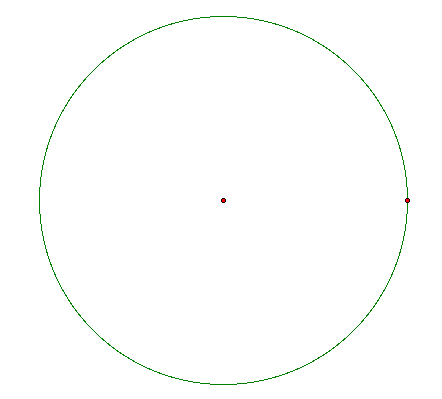
1. We first construct a circle of arbitrary size.
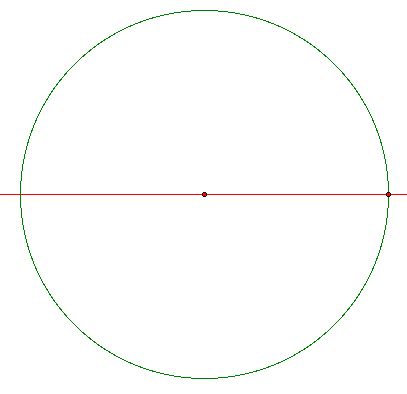
2. Next, we construct a horizontal line from the center of the circle out thorough the edge.
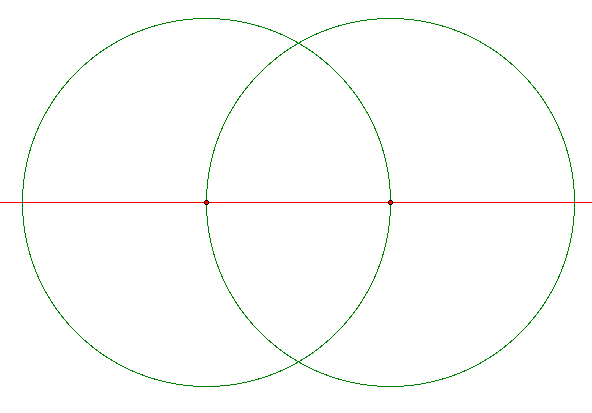
3. Next, we construct another circle using the edge of the first as the center and the center of the first as the edge.

4. Next, we construct a line through the center of the first circle and the top intersection of both circles.
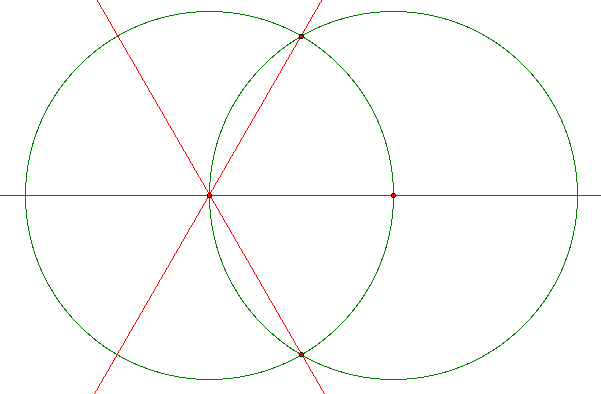
5. Next, we construct another line through the center of the first circle that passes through the bottom intersection of the circles.

6. We are now ready to draw out the sides of our hexagon. The first side starts at the bottom intersection of both circles and goes to the center of the second circle.

7. The second side goes from the bottom intersection of the two circles to the bottom intersection of the first line we drew and the first circle.

8. The third side goes from the bottom intersection of the first circle and the first line to the left intersection of the horizontal line and the first circle.
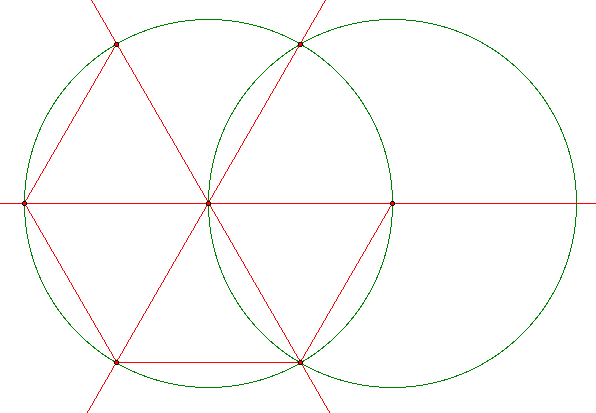
9. The fourth side goes from the intersection of the first circle and the horizontal line to the top intersection of the first circle and the second line.
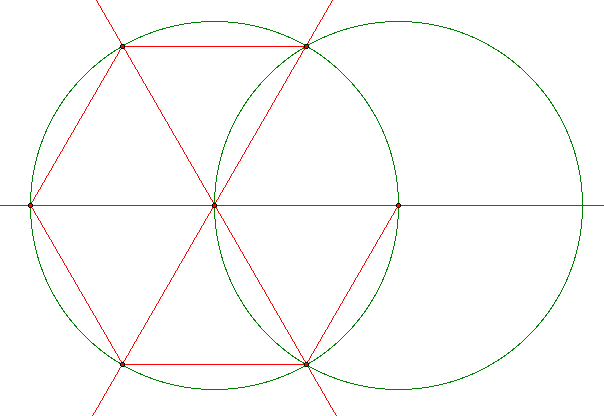
10. The fifth side goes from the top intersection of the first circle and the second line to the top intersection of both circles.
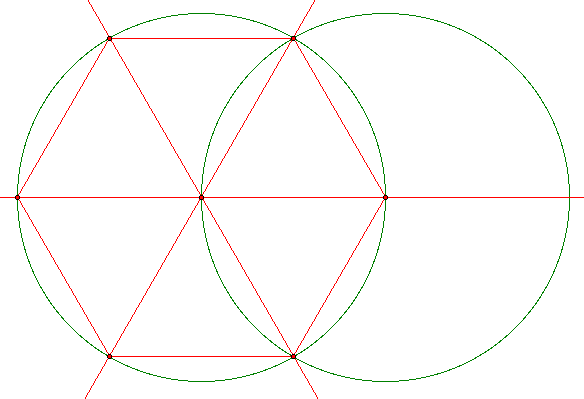
11. The sixth side connects the fifth side to the first side, and we have our hexagon.

12. When we hide the lines and label the vertices, we have a clean picture of our constructed hexagon.
We now arrive at looking at how to construct a heptagon. It is impossible to construct a perfectly regular heptagon by using only a straightedge and compass as we have done before. So my question is, why is that?
Because of this impossibility, I believe it is a good time to end this essay.